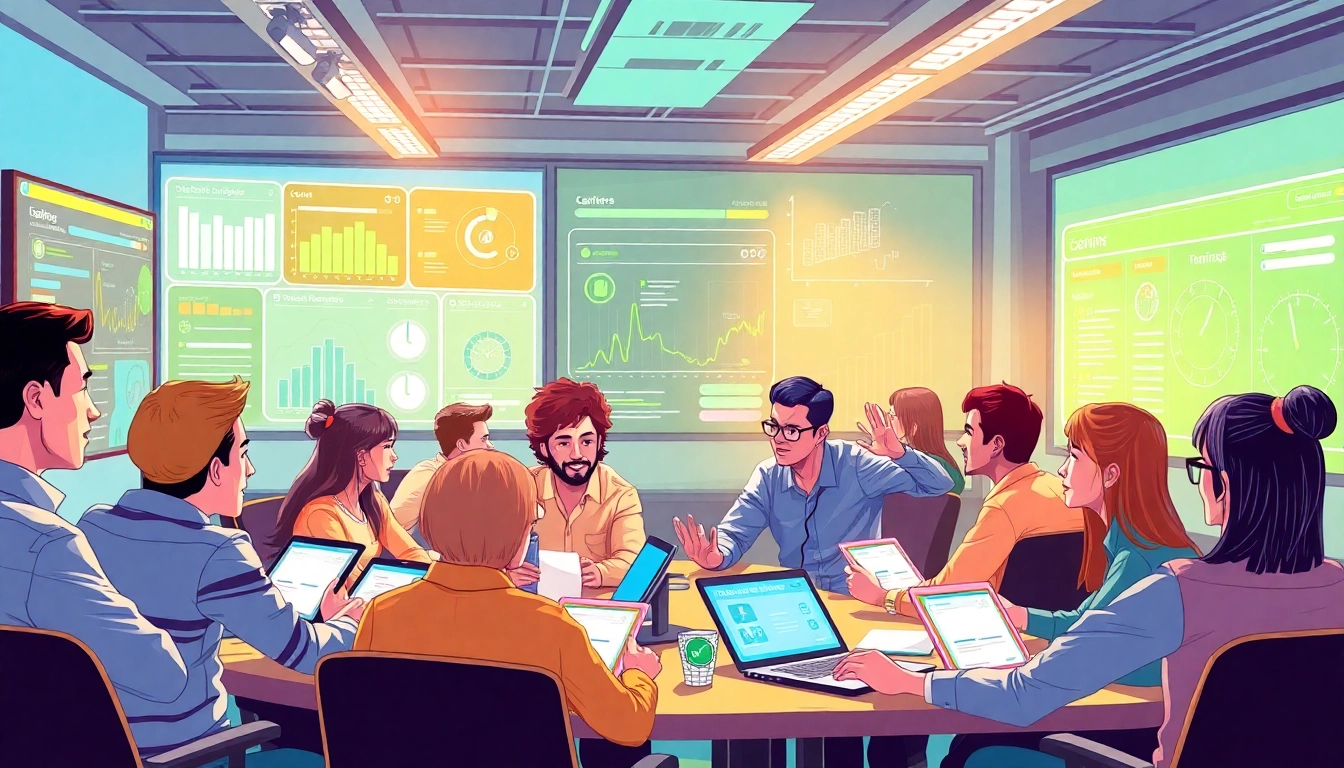Ultimate Guide to Training Gamification in 2025: Boost Engagement Now

Understanding Training Gamification
What is Training Gamification?
Training gamification is the process of integrating game-based elements into training programs to enhance engagement and learning outcomes. It involves applying mechanics commonly found in games, such as points, badges, challenges, and leaderboards, into educational contexts. The goal is to make learning more interactive and enjoyable, transforming traditional training methodologies into dynamic experiences. As workforce dynamics evolve and the demand for effective learning solutions increases, training gamification has emerged as a potent strategy for organizations aiming to improve employee performance and knowledge retention.
The Psychology Behind Gamification
Understanding the psychological principles that underpin gamification is crucial for its effective implementation. Gamification leverages several cognitive theories, such as:
- Behaviorism: Positive reinforcement through rewards (badges, points) encourages desired behaviors.
- Cognitive Load Theory: Gamification can break complex information into manageable chunks, making learning less overwhelming.
- Self-Determination Theory: Providing a sense of autonomy through choices in gamified environments boosts motivation.
By tapping into these psychological mechanisms, gamification creates a motivating environment that encourages learners to take control of their education.
Benefits of Incorporating Gamification
The integration of gamification into training programs offers numerous benefits, including:
- Increased Engagement: Gamified elements capture attention and create motivational experiences, reducing drop-offs.
- Better Knowledge Retention: By using rewards and challenges, employees are more likely to remember what they’ve learned.
- Fostered Healthy Competition: Leaderboards encourage employees to strive for higher performance levels, driving motivation.
- Adaptable Learning Paths: Gamification allows learners to personalize their experience, catering to individual strengths and weaknesses.
Incorporating gamification can thus transform a mundane training program into an engaging experience while achieving improved results for both employees and organizations.
Strategies for Implementing Training Gamification
Defining Clear Objectives for Gamified Training
To successfully implement gamification, organizations must begin by defining clear learning objectives. These objectives should be specific, measurable, achievable, relevant, and time-bound (SMART). When the objectives are clear, organizations can align game mechanics directly with these goals, ensuring that every element of the gamified experience contributes meaningfully to the desired outcomes.
For example, if the objective is to enhance customer service skills, the gamified training might include simulation scenarios where employees earn points for successfully navigating difficult customer interactions.
Choosing the Right Gamification Tools
Selecting the appropriate tools is critical for the effective application of gamification. Numerous platforms offer gamification solutions for training, which vary in features, scalability, and integration capabilities. Common tools include:
- LMS Platforms: Learning Management Systems (LMS) like Moodle and TalentLMS often have built-in gamification features.
- Game-based Learning Platforms: Solutions like Kahoot! or Quizlet create engaging quizzes and games that are perfect for training.
- Custom Development: Organizations can also choose to develop bespoke gamified training experiences tailored to unique needs.
The right tool will depend on the organization’s requirements, budget, and the type of training content being delivered.
Engaging Employees Through Game Elements
Engagement is the foundation of successful gamification. To foster this engagement, various game elements can be incorporated into training programs:
- Points: Employees earn points for completing tasks, which serve as a tangible representation of their progress.
- Badges: Badges recognize achievements and motivate learners to progress through various learning stages.
- Challenges and Quests: These create a narrative and provide structure to learning, making it fun and relatable.
- Leaderboards: Displaying scores encourages competition among peers and introduces a sense of friendly rivalry.
The combination of these elements can convert dull learning sessions into lively, interactive experiences that keep employees motivated and eager to learn.
Common Challenges in Training Gamification
Identifying Potential Pitfalls
While gamification offers many advantages, organizations must also be aware of potential challenges. These include:
- Overemphasis on Rewards: Focusing too heavily on rewards can negate intrinsic motivation, leading employees to participate only for the prizes.
- Complexity in Design: Creating an effective gamified experience requires thoughtful planning and design; poorly designed systems can cause confusion.
- Technology Barriers: Employees may struggle with technology, particularly older workers or those less familiar with digital tools.
By acknowledging these pitfalls ahead of time, organizations can better prepare strategies to navigate them.
Balancing Education and Entertainment
One of the essential challenges of gamification is striking the right balance between educational content and entertainment. Training should remain focused on learning objectives while incorporating engaging elements. If done poorly, gamification can lead to distractions rather than facilitate learning. To maintain this balance, organizations can:
- Ensure that game elements align closely with the learning objectives.
- Gather feedback from participants continuously to measure engagement without losing focus on training goals.
- Evaluate gamification strategies regularly to refine and enhance effectiveness.
By focusing on balance, organizations can capitalize on gamification’s benefits while ensuring that educational value remains paramount.
Overcoming Resistance to Change
Introducing gamification can sometimes be met with resistance from employees who are accustomed to traditional training methods. To overcome this challenge, organizations should:
- Communicate the benefits of gamification, clearly articulating how it can enhance their learning experience.
- Involve employees in the design process, allowing them to contribute ideas, which can foster a sense of ownership.
- Implement pilot programs to demonstrate effectiveness before full-scale deployment.
By proactively managing change, organizations can ease the transition to gamified training.
Best Practices for Effective Gamified Training
Aligning Game Mechanics with Learning Goals
For gamification to be effective, its mechanics must align tightly with the learning goals. Game elements should reinforce the training material rather than serve as mere decoration. For instance, if a goal is to enhance communication skills, scenarios that require effective communication should be central to gameplay. Keeping a consistent focus will ensure that the gamified training serves a purpose and is not seen as a distraction.
Feedback Systems and Progress Tracking
Feedback is an essential component of any learning experience, particularly within a gamified framework. Providing timely and constructive feedback helps learners understand what they are doing well and where they can improve. Additionally, tracking progress through visible metrics (such as points or levels achieved) helps maintain motivation. Organizations can leverage technology to provide real-time feedback through automated systems, allowing learners to see their progress instantly and adjust their approaches as needed.
Continuous Improvement through Data Analysis
The data generated through gamified training initiatives can provide invaluable insights. Organizations should analyze engagement rates, completion rates, and performance metrics to evaluate the effectiveness of their gamification strategies. This ongoing analysis will help identify areas for improvement, ensuring the training remains relevant and impactful. By iteratively enhancing the program based on data, organizations can ensure they are maximizing the potential of gamification.
Measuring Success in Training Gamification
Key Performance Indicators to Consider
Effectively measuring the success of gamified training requires establishing Key Performance Indicators (KPIs) that align with organizational goals. Some useful KPIs for evaluation include:
- Engagement Levels: Track participation rates, completion rates, and activity levels during training sessions.
- Knowledge Retention: Implement assessments before and after training to measure the level of knowledge retained.
- Employee Satisfaction: Use surveys to assess employee perceptions of gamified training, including enjoyment and perceived relevance.
Incorporating these metrics allows organizations to gain clarity on the impacts of their gamified training.
Assessing Employee Engagement
Engagement is a critical factor when evaluating the effectiveness of gamified training. Tools such as surveys, interviews, and focus groups can provide qualitative feedback on employee experiences. Additionally, organizations should consider conducting A/B testing to examine which elements of gamification lead to higher engagement. By constantly prioritizing engagement, training initiatives can evolve to meet the dynamic needs of the workforce.
Long-term Impact on Learning Retention
While immediate feedback provides insight into the effectiveness of gamification, the long-term impact on learning retention is the ultimate measure of success. Organizations should follow up with employees months after training to assess whether knowledge and skills have been applied in real-world situations. Tracking the transfer of learning to everyday work scenarios becomes essential for understanding the overall effectiveness of gamified training initiatives.





